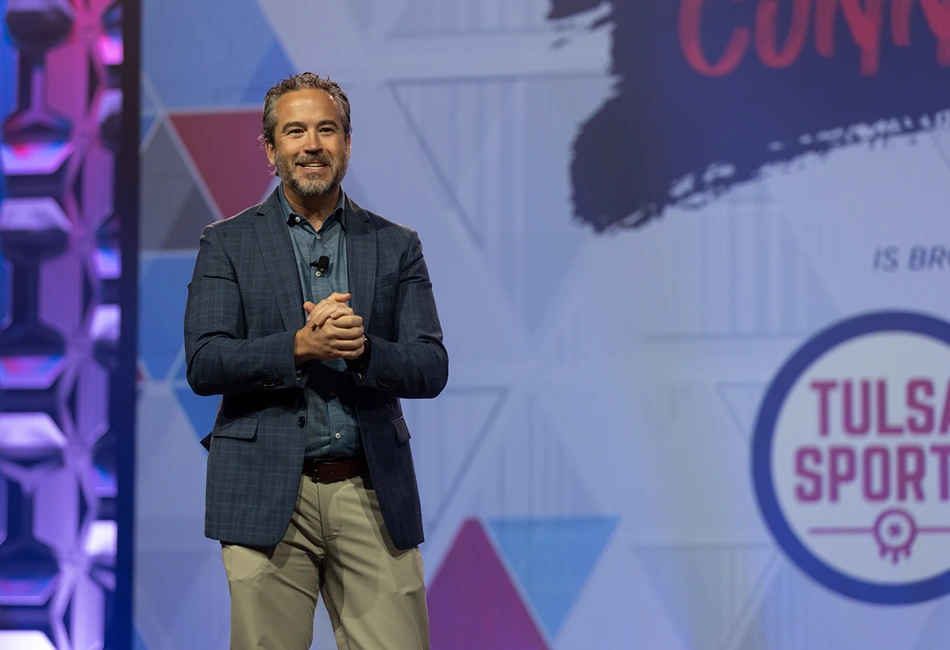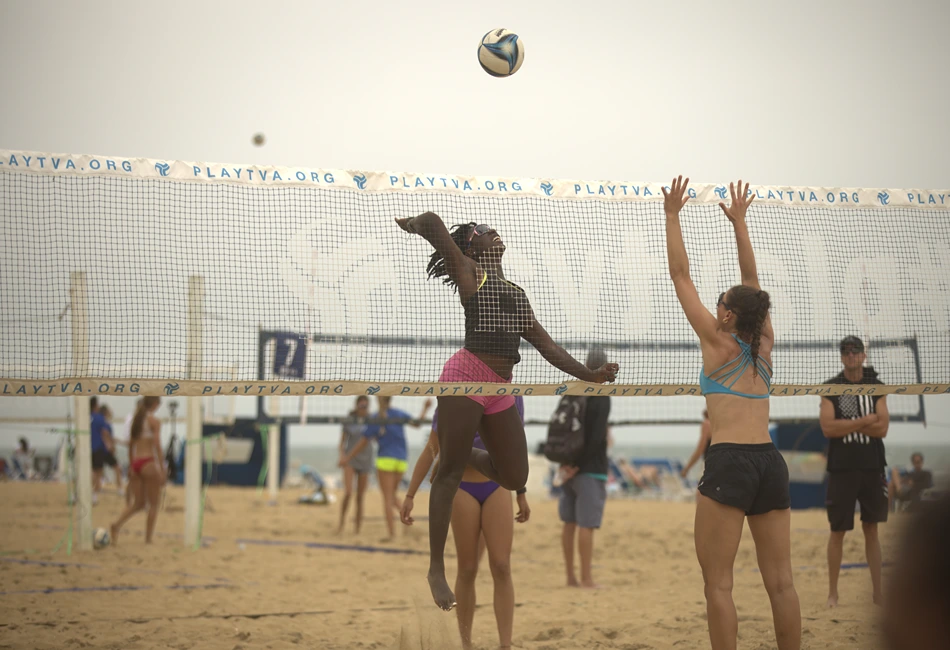
Veronica Cruz (Stanford University) makes the game-winning catch during a semifinal game between the University of Oregon and Stanford University at the USAU Division 1 Nationals in Raleigh, North Carolina. Photo by Paul Rutherford / UltiPhotos
Essayist Henry David Thoreau once implored humanity in his seminal work Walden to simplify their lives.
Considering Walden was published in 1854 and society’s complexities have grown substantially since then, it’s safe to say we did not heed his advice.
Now however, a growing segment of the sporting populace is aligning with Thoreau’s vision, as the sport of Ultimate (or Ultimate Frisbee, as it is commonly labeled) continues to see its participation numbers swell, in part because of the simplicity of its rules.
“There are a couple of reasons for Ultimate’s popularity,” said Byron Hicks, manager of events for USA Ultimate, the national governing body for the sport in the United States. “A lot of sports are on the decline. Football, baseball, basketball. Some of that is cost. Traveling teams can be expensive. Ultimate isn’t expensive. You just need a field, eight cones and a disc.”
Simple.

According to USA Ultimate, 7 million youth and adults play the sport in more than 80 countries across the world. Photo by Jolie J Lang for UltiPhotos
Since its creation in 1968, Ultimate has been embraced by athletes who prefer its relatively laid-back regulations. The sport, which is officially played on a regulation field that measures 64m by 37m with end zones 18m deep, features competitors passing a disc to teammates with a team scoring when the offense completes a pass in the defense’s end zone. No physical contact is allowed between players and competitors are responsible for their own foul and line calls.
“Another thing people like about Ultimate is the nature of the sport,” Hicks said. “There are no referees and it’s built into the game that players aren’t expected to cheat. We call it the spirit of the game and a lot of youth groups like that component. With no referees, everyone is expected to work it out on their own and are held to a higher standard.”
According to USA Ultimate, 7 million youth and adults play the sport in more than 80 countries across the world, and the Sports and Fitness Industry Association has described Ultimate as one of the fastest-growing team sports in the country. A breakdown by USA Ultimate shows in 2017 the sport had 58,378 full year and single event members, up from 54,849 in 2016. That number has grown every year and has more than doubled its 2003 membership total, which was 20,449.
“I started playing in the 1980s and at that time, we were the Ultimate Players Association,” Hicks said. “I think the membership was 3,000 and you knew all the players.”
Youth (ages 12 and under) is Ultimate’s fastest growing member age group, with a 137.19 percent average annual growth, which bodes well for the sport’s future.
“There are a lot of organizations like Triangle Ultimate in North Carolina, and Minnesota Ultimate that have paid directors and paid staff,” Hicks said. “They are really helping grow the game at younger levels. We used to mostly have local volunteers working with Ultimate. Now we have state-based organizations in California, Illinois, New York, Minnesota. We have eight or nine and we’re trying to add one or two more every year.”
Ultimate is also gaining a foothold among high school and college-aged athletes. In 2017, Vermont became the first state to approve Ultimate as a high school varsity sport and on the collegiate level, more than 800 teams from colleges and universities across the country compete in USA Ultimate’s college series every year.
“Ultimate is really popular in Minnesota, North Carolina, Seattle, Boston, really the whole Eastern United States where it started,” Hicks said. “I’ll be traveling for business and see people playing Ultimate and they have no idea about USA Ultimate. They don’t know they have a league in their city that has 20 teams. They just play because they like it.”
One large reason Ultimate resonates with so many participants is its gender-equality on the field, a unique trait in organized sports in which co-ed teams compete against one another.
“There’s no other sport that puts men and women on the field at same time in a competitive nature,” Hicks said.
The sport’s burgeoning following, coupled with its appeal to both genders, has translated into Ultimate’s professional and championship games being televised on ESPN, a huge step in appealing to a wider audience. Another beneficial occurrence took place in 2015, when the World Flying Disc Federation, which serves as the international governing body for the sport of flying disc, was recognized by the International Olympic Committee, making Ultimate eligible for future Olympic games.
“A nice thing about Ultimate when it comes to the Olympics is because we can play at a mixed gender level, it can be a cheaper event to produce,” Hicks said. “The Olympics are down on team sports. They are more expensive. Soccer and basketball have to bring both men’s and women’s teams. For us, we just have to bring one team. That’s it. We’re perfect for the Olympics.
“We would love to get our sport into the Olympics in Los Angeles (L.A. will host the Summer Olympics in 2028),” Hicks said. “That would blow the sport up.”
Worldwide, the sport is already on a “blowing up” trajectory. While the United States remains the pre-eminent Ultimate force (the U.S. has captured gold in the last four World Games and won silver in the sport’s inaugural inclusion in the games in 2001), other countries are gaining traction.
“The world has gotten much better,” Hicks said. “Canada, Japan and England all have good teams. Australia has stronger mixed teams. The world is catching up to us. At the World Games in Poland in 2017, the U.S. lost a game to Colombia in the early rounds and it was a shocker. We came back and beat the tar out of them in the title game (the United States prevailed 13-7), but it was a wakeup call.”
As the world continues to make strides, USA Ultimate is echoing that growth domestically, and has maintained a steadfast commitment to increasing the sport’s popularity.
“Anywhere you have a big city now, you have Ultimate going on,” Hicks said. “You go to a city like Denver, there are 15 soccer associations reporting to another association. They have that infrastructure that makes it easy for them to go out and recruit. The sport is growing because we have state people promoting Ultimate. We are seeing incredible results and we expect that to continue.”








